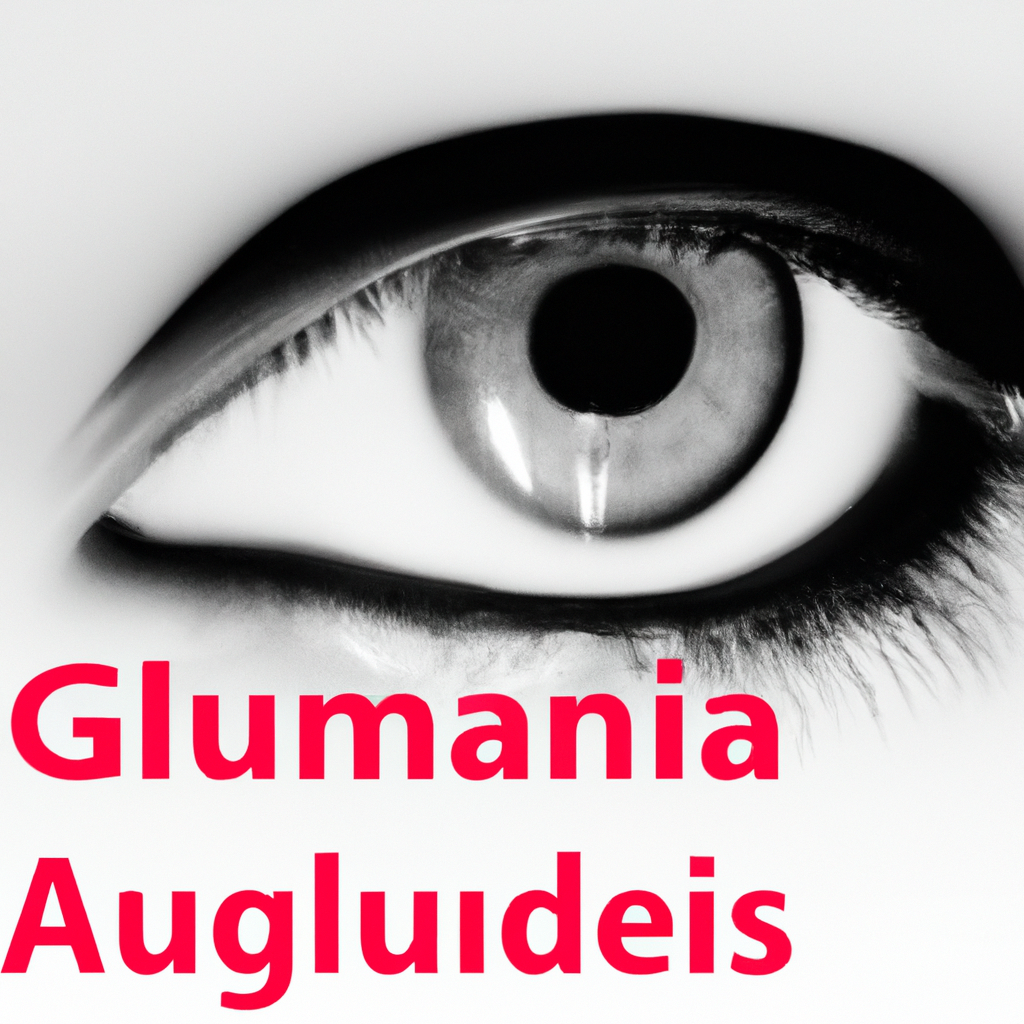As we age, our eyesight often begins to deteriorate, leading to many types of vision loss. But for those suffering from glaucoma, the battle for good vision can be even tougher—it’s called the “silent thief of sight” because it can rob you of your most precious sense before you even realize it. By raising awareness and early detection, many of those diagnosed with glaucoma can treat the condition and still enjoy a good quality of life. In this article, we’ll explore the signs and treatment options for glaucoma, as well as the importance of early detection.
1. Spotting the Signs of Glaucoma
It’s important to know the many signs of glaucoma so you can seek proper medical care as soon as possible. The disease can cause permanent vision loss, and the earlier it’s detected, the better. Here are few warning signs to look out for:
- BLURRED PERIPHERAL VISION: Your peripheral (outside) vision might appear foggy or you may be losing portions of your vision.
- CLOSED-ANGLE GLAUCOMA: This type of glaucoma is accompanied by moderate to severe eye pain, vomiting, and nausea. This type can increase quickly, so it’s important to seek medical attention immediately.
- OPEN-ANGLE GLAUCOMA: This type of glaucoma can be more difficult to detect, since its early signs may not be legally visible to the patient. Common signs are a halo effect around bright lights when driving at night or the need for brighter lighting when you’re reading.
Other signs of glaucoma include seeing bright spots or halos around lights, difficulty adjusting from dark to light environments, and redness in your eyes. Glaucoma can also cause headaches and make your eyes sensitive to light. If you experience any of these symptoms, it’s vital to speak to an eye specialist as soon as possible. They can help diagnosis glaucoma, start treatment, and protect your vision.
2. Uncovering the Causes of Glaucoma
Glaucoma is a complex eye condition that can cause damage to the optic nerve and lead to blindness. Before designing therapies to treat glaucoma, it’s essential to understand its causes. Scientists are working hard to gain clues about why some people are more prone to glaucoma than others.
Family History – One risk factor is having a direct family member with the condition. Sadly, even if you don’t carry the glaucoma gene, you may still be susceptible to developing the eye condition later in life.
IOP Levels – Intraocular Pressure (IOP) measures the pressure of the fluid inside the eye and is a major risk factor for glaucoma. High IOP levels can occur when too much fluid is produced or the drainage channels are blocked, and it can lead to permanent damage to the optic nerve.
Age & Gender – Generally, glaucoma is more likely to affect people over 40. Scientists have also found that the disease is more common in men over 50. Research is still ongoing to discover why these age and gender differences occur.
- Genetic Factors
- Injury or Serious Eye Disease
- Thin Corneas
- Cardiovascular Disease & Blood Circulation Issues
These are just some of the underlying causes of glaucoma. There could be additional factors outside of the ones mentioned here. It’s vital that healthcare professionals work to uncover all the potential causes of glaucoma, to better enable us to diagnose and treat the condition.
3. Treatment Strategies for Glaucoma
Treating Glaucoma requires specialized care and a comprehensive strategy. As one of the leading cause for irreversible blindness, it’s important to address glaucoma as soon as possible.
The three main strategies for treating glaucoma are:
- Glaucoma medications
- Laser treatments
- Surgery
A combination of one or more of these strategies may be prescribed by your ophthalmologist to control your glaucoma. The goal is to reduce intraocular pressure, preserving your vision and halting any further decline.
Medications are prescribed to reduce pressure in the eye, either reducing the production of aqueous humor or allowing it to drain from the eye. It also may be used to stop the deterioration of the optic nerve. These drugs include: prostaglandin analogs, carbonic anhydrase inhibitors, miotics, and adrenergic agonists, among others.
Laser treatments may help lower eye pressure by enabling fluid drainage from the eye in cases where medications are not as effective. Glaucoma laser surgery, also known as laser trabeculoplasty, helps change the trabecular meshwork to allow increased fluid drainage from the eye.
Surgery is sometimes necessary to treat glaucoma. This usually requires the installment of an additional drainage channel in the eye. Surgery may be used if medications, laser treatments, and other therapies have been ineffective in maintaining your intraocular pressure.
4. How to Promote Glaucoma Awareness
Raising awareness about glaucoma is essential to encourage early detection, diagnosis, and treatment of this condition. To promote glaucoma awareness, here are some ways you can spread the word:
- Promote education on risk factors. Many people don’t know the signs of glaucoma or how to identify potential risk factors associated with the condition. By focusing on educating people about glaucoma, you can share the most up-to-date information available to discourage the spread of the disease.
- Organize a fundraiser. Collect donations from individuals and businesses in the community and use the funds to provide glaucoma screenings, treatments, and research. You could also plan a 5K run or other types of events to raise awareness and funds for glaucoma awareness.
- Engage with community members. Partner with local doctors, hospitals, and medical professionals for seminars on glaucoma awareness and detection. Partner with local vision centers to help screen patients for glaucoma and other eye diseases. Hold events such as vision screenings to help detect glaucoma earlier.
- Utilize social media. Create social media campaigns to promote glaucoma awareness and donations. Use hashtags to increase engagement and visibility on various platforms. Host livestreams and Q&A sessions with experts to educate people about glaucoma.
When it comes to glaucoma awareness, the possibilities are endless. With the right strategy, you can quickly spread the word and help people detect and prevent the condition. By taking steps to promote glaucoma awareness, you can help reduce the number of people affected by this condition and encourage early diagnosis and treatment.
5. Protecting Your Eyesight with Early Detection
Early detection is one of the most important aspects of protecting your eyesight. Your optometrist can perform a number of tests and screenings to look for any potential issues or diseases that may be affecting your eyesight. Regular eye exams are crucial so your optometrist can detect changes in your vision that may be symptomatic of something seriously wrong.
- To ensure early detection and prevention:
- Schedule regular visits to your optometrist for a full eye exam.
- Be aware of changes in your vision as well as potential warning signs like headaches, double vision, and eye pain.
- Tell your optometrist of any past and current eye diseases in your family or medical history.
Early detection is key to detecting and treating eye diseases. For example, if you are diagnosed with glaucoma, early detection will make treatment more successful. Diagnosis and treatment can enable your optometrist to control the progression of the disease and prevent further damage.
Some of the screenings and tests that your optometrist may use include refraction tests, visual acuity tests, ophthalmoscopy exams, and tonometry tests. All of these tests are designed to detect pathology including cataracts, macular degeneration, diabetic retinopathy, glaucoma, and more. Your optometrist will be able to provide you with more information about each test’s purpose and results.
Glaucoma may be the “silent thief of sight”, but this doesn’t have to remain the case. With the right level of awareness and outstanding preventative and curative treatments available, it’s possible to keep this insidious eye condition to a minimum. So, don’t keep quiet about glaucoma – shout it from the rooftops if you have to! If we work together to increase awareness of this important issue, it’ll be a step towards better eye health for everyone involved.


